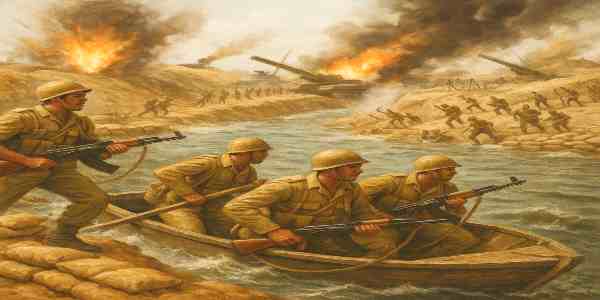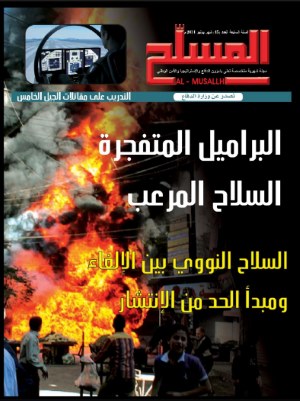Overview. Directive 41 is a highly detailed operational guidance manual issued by General Saad El-Shazly, Chief of Staff of the Egyptian Armed Forces, during the preparatory phase preceding the 1973 October War
It served as the framework for the war plan, compiling practical solutions to all operational challenges associated with crossing the Suez Canal and destroying the Bar Lev Line.
During the War of Attrition, known to the Israelis as the “War of a Thousand Days,” General El-Shazly established a new principle within the Egyptian Armed Forces — the issuance of booklets called “Directives.” Each edition introduced new tactical ideas for officers and soldiers to help them overcome various combat challenges. This process continued until the issuance of Directive 41, prepared by a special committee from the Armed Forces Operations Authority.
The idea behind Directive 41 arose when General El-Shazly consolidated the combat experience gained during the War of Attrition, extracting lessons learned to prepare and refine the offensive plan for crossing the canal and destroying the Bar Lev Line.
Given the numerous operational problems that could hinder the execution of such a complex plan, he ordered the formation of a special committee to draft this directive — transforming a complex war plan into a set of simple, actionable procedures understood by every soldier.
In military terms, it represented a practical translation of the strategic objective— crossing and establishing bridgeheads, destroying the Bar Lev Line, repelling counterattacks, and transitioning to a new phase of warfare under changing political conditions — into executable operational tasks at every organizational level.
Development and Training.
In mid-1973, only months before the war, General El-Shazly visited the Command and Staff College to meet with officers studying there. He spent hours discussing Directive 41, which included the complete operational details of the crossing— from the number of soldiers per assault boat, the weapons and ammunition allocations, breaching methods for the sand embankment, naval commando operations to seal napalm pipes, to the timing of advance detachments into the Sinai.
The directive also specified bridge deployment schedules, smoke generator positions, coordination between units, and the sequential crossing of twelve assault waves of infantry supported by anti-tank missiles.
All this was conducted under strict secrecy. The directive left no operational detail unaddressed, covering every possible challenge to ensure flawless execution — a key factor behind one of the most successful military operations in modern warfare.
General El-Shazly’s decision to involve Staff College officers in reviewing the draft of Directive 41 proved to be highly insightful, as these officers represented the most capable field commanders from various branches of the armed forces.
The discussions, which El-Shazly personally supervised, lasted two days in a professional and scientific environment. Their outcomes yielded practical solutions to major coordination issues among units, serving as the final review of the war plan before execution.
Subsequently, the directive became the master plan for the Suez Canal crossing and the destruction of the Bar Lev Line. Detailed derivative plans were then issued to field armies, divisions, brigades, and battalions responsible for execution.
Implementation and Readiness.
Egyptian soldiers and commanders trained rigorously for nearly 18 months to execute Directive 41. Portions of the directive were condensed into concise procedural checklists distributed to troops, ensuring the reduction of human error during the complex engineering operations required to breach the sand barrier and coordinate movement under enemy fire.
The crossing scenario was rehearsed dozens of times in field conditions until it became second nature to the soldiers. Thus, when H-Hour arrived at 2:00 p.m. on October 6, 1973, they seamlessly transitioned from training to real combat execution — performing what they had practiced daily as routine drills.
The outcome was a flawless and decisive success, a direct result of precise planning and disciplined execution.
Significance of Directive 41.
Directive 41 carries this distinctive number within the administrative sequence of operational directives issued by the General Command since 1970. It is regarded as the fundamental document of the Egyptian crossing plan and one of the key secrets behind the October 1973 Victory.
It played a vital role in restructuring and reorganizing operational planning following the 1967 defeat, contributing to the success of Egypt’s unexpected and well-coordinated assault across the Suez Canal.
Today, it is cited in Egyptian military references as a core historical document in the preparation, guidance, and engineering efforts associated with the war.
The distribution of Directive 41 — in the form of classified summary booklets to commanders and units — caused confusion within Israeli intelligence, which failed to assess whether the Egyptian exercises based on the directive were mere training or preparations for a real offensive.
This confusion was amplified by successful Egyptian and Syrian deception operations, masking troop movements and combat preparations.
Additionally, Israel’s overconfidence in its military superiority and in the impenetrability of the Bar Lev Line led to its failure to interpret intelligence warnings correctly.
As a result, the Egyptian Armed Forces successfully concealed their intentions, making it nearly impossible for enemy intelligence to detect or predict the actual execution of the crossing.
Main Features of Directive 41.
Directive 41 was not merely a written plan, but a rigorous operational manual that turned every soldier into an active and aware participant in the execution of the crossing plan. Its main features included:
- multi-level approach encompassing divisions, brigades, battalions, and individual soldiers.
- total of about 300 pages, including maps and annexes.
- focus on precise definition of tasks and duties for all personnel across ranks.
Detailed scheduling for the twelve assault waves crossing the canal and destroying Bar Lev’s fortifications within 5–7 hours.
Exact timing for bridge construction (within 6–8 hours).
Specification of each soldier’s position and loadout in every boat.
Clear identification markings for vehicles, tanks, and helmets to organize movement and prevent confusion.
Detailed instructions on resupply, ammunition types, and quantities.
Comprehensive training and repetition, ensuring the plan could be executed “to the letter” at the critical moment.
Key Operational Elements
Unit Assignments
Each unit knew its position, movement timing, and crossing point.
Tasks were distributed precisely: assault, breaching, securing, reserve, or fire support.
Crossing Operations
Number of troops per rubber boat.
Seating arrangement and assigned weapons.
Precise timing for each wave’s departure and landing.
Combat Engineering
Breaching the sand barrier using high-pressure water pumps.
Installing heavy and light bridges under fire.
Securing crossing zones against artillery and air attacks.
Fire Support and Coordination
Coordinated artillery barrages and smoke screens before and during the crossing.
Full integration between air and ground fire support.
Defined fire lines and objectives for each phase.
Deception and Secrecy
Conducting mock training before the war to mislead Israeli intelligence.
Using camouflage and deception measures along the canal to conceal the real plan.
Execution and Results.
At 1400 hours on October 6, 1973, the Egyptian Armed Forces began implementing Directive 41 under the direct supervision of General Saad El-Shazly from the central operations command.
He meticulously tracked the progress of each wave, calculating troop movement and anti-tank missile expenditure to ensure that the advancing forces could repel Israeli armored counterattacks — one of the greatest operational concerns of the campaign.
Directive 41 stands as a model of professional military thinking, combining scientific analysis with strategic decision-making under complex battlefield conditions.
It demonstrated a high level of integration between leadership, planning, and execution, and reflected the Armed Forces’ ability to transform operational vision into effective combat reality.
This balanced and adaptive doctrine was a key factor in achieving the historic crossing of the Suez Canal and the defeat of the Bar Lev Line — a barrier once deemed impregnable by all military standards.
The successful implementation of this directive was no coincidence, but rather the result of a brilliant military mind rooted in knowledge, discipline, and innovation.
In conclusion, Directive 41 was not merely an operational order — it was the embodiment of a professional military doctrine that achieved harmony between combat philosophy and field execution, laying the foundation for modern principles of command, control, and strategic planning.
It remains a landmark in the history of military thought and a lasting testament to the professionalism and ingenuity of the Egyptian Armed Forces.
References:
Memoirs of General Saad El-Shazly.2003
73 Historians Website
Documents from the Egyptian Ministry of Defence.












 English
English  العربية
العربية 








